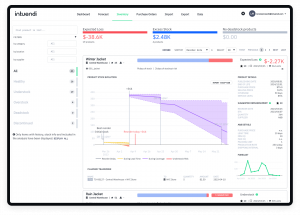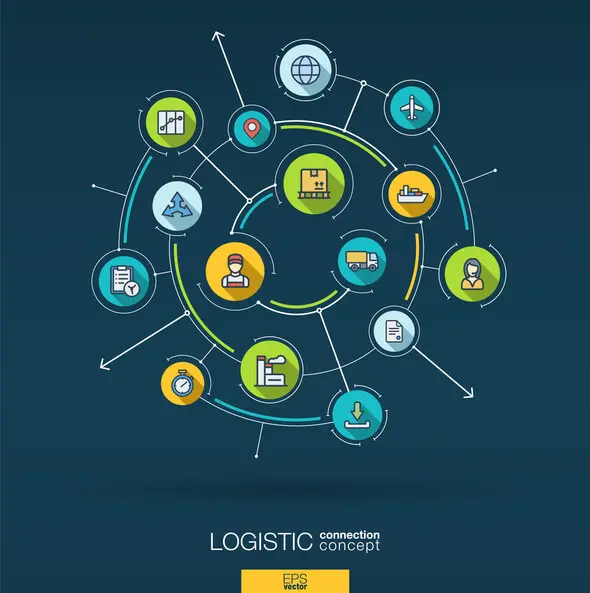In today’s rapidly evolving business landscape, a robust supply chain strategy has become an essential cornerstone for companies seeking to remain competitive and thrive. As customer demands fluctuate, technologies advance, and global markets shift, having a well-defined approach to managing the flow of goods and services is crucial for operational efficiency, customer satisfaction, and long-term success.
What is a Supply Chain Strategy?
A supply chain strategy is a comprehensive plan that outlines how a company will effectively manage the interconnected network of suppliers, manufacturers, distributors, and retailers involved in the production and delivery of its products or services. It encompasses the entire journey, from sourcing raw materials to delivering the final product to the end customer. The primary objectives of a supply chain strategy are to minimize costs, reduce lead times, enhance quality control, and ensure reliable and timely delivery to meet customer expectations.
Why is Supply Chain Strategy Important?
Supply chain strategy holds immense importance for businesses, offering a plethora of benefits that can significantly influence their financial performance and market standing. Let’s delve into why it’s so crucial:
Firstly, operational efficiency is greatly enhanced through a well-executed supply chain strategy. By streamlining processes, optimizing inventory levels, and eliminating wasteful practices, companies can bolster their overall efficiency, resulting in cost reductions and heightened profitability.
Secondly, customer satisfaction is paramount in today’s competitive landscape. Meeting customer demands promptly and consistently is essential for fostering loyalty and staying ahead of rivals. An effective supply chain strategy ensures reliable delivery, minimizing instances of stock-outs and delays, thus bolstering customer satisfaction levels.
Moreover, in the global marketplace, a strong supply chain can be a game-changer. It sets a company apart from its competitors by facilitating cost-effective operations, enabling faster time-to-market, and delivering superior customer service. This provides a distinct competitive advantage that is hard to replicate.
Furthermore, supply chains are inherently vulnerable to various risks such as production disruptions, transportation delays, and demand fluctuations. A well-designed strategy plays a pivotal role in identifying and mitigating these risks, ensuring business continuity and resilience in the face of adversity.
Lastly, with the escalating concerns about environmental sustainability, companies are under mounting pressure to adopt eco-friendly practices across their supply chain operations. A strategic approach can help in reducing waste, optimizing resource utilization, and minimizing the carbon footprint, thereby aligning the business with sustainable practices and meeting evolving consumer expectations.
Key Features of Supply Chain Strategy
Successful supply chain strategies possess several essential features that contribute to their effectiveness:
Flexibility is paramount. The ability to adapt to changing market conditions, customer preferences, and technological advancements is crucial for maintaining a competitive edge. End-to-end visibility is indispensable. Transparency across the entire supply chain, from sourcing to delivery, enables better decision-making, risk management, and efficiency optimization. Collaboration is key. Fostering strong partnerships and information sharing with suppliers, logistics providers, and other stakeholders can lead to improved coordination and overall performance. Technology integration is critical. Leveraging advanced technologies, such as artificial intelligence, automation, and real-time data analytics, can drive significant improvements in supply chain operations. Sustainability is imperative. Incorporating environmentally-friendly practices, such as reducing waste, optimizing transportation routes, and utilizing renewable materials, is becoming increasingly important for companies to meet regulatory requirements and customer expectations.
Types of Supply Chain Strategies
While the specific approach may vary depending on the industry, product, and company objectives, several common supply chain strategies have emerged:
Customer-Centric
This strategy focuses on delivering a highly customized and responsive experience to meet the specific needs and preferences of individual customers. By closely monitoring consumer demands and leveraging agile manufacturing processes, companies can quickly adapt their offerings and supply chain operations to cater to diverse customer segments.
Key aspects of a customer-centric supply chain strategy include:
- Mass customization capabilities
- Demand-driven production planning
- Flexible and responsive distribution networks
- Direct-to-consumer channels
- Personalized customer service and support
Predictive Business
Leveraging advanced analytics and big data, predictive business strategies aim to anticipate market trends, consumer behavior, and demand patterns, enabling companies to proactively adjust their supply chain operations accordingly. By employing techniques such as demand forecasting, predictive maintenance, and real-time supply chain visibility, businesses can optimize inventory levels, streamline production, and minimize disruptions.
Characteristics of a predictive business supply chain strategy include:
- Integrated data analytics platforms
- Demand sensing and forecasting models
- Proactive capacity planning
- Predictive maintenance for equipment and assets
- Continuous supply chain monitoring and optimization
Visibility
Enhancing visibility across the entire supply chain is a strategy focused on transparency, information sharing, and collaboration among all stakeholders involved in the process. By fostering a culture of open communication and implementing advanced tracking and monitoring technologies, companies can identify bottlenecks, mitigate risks, and optimize operations for improved efficiency and responsiveness.
Key elements of a visibility-driven supply chain strategy include:
- Real-time tracking of goods, assets, and shipments
- Information sharing platforms for suppliers and partners
- End-to-end supply chain mapping and visualization
- Collaborative planning and decision-making processes
- Proactive risk identification and mitigation strategies
Smart Automation
As artificial intelligence (AI) and automation technologies continue to advance, companies are increasingly adopting smart automation strategies to streamline their supply chain operations. By leveraging robotics, autonomous vehicles, and intelligent decision-making systems, businesses can automate repetitive tasks, optimize logistics processes, and enhance overall productivity and accuracy.
A smart automation supply chain strategy may encompass:
- Robotic process automation for administrative tasks
- Automated warehousing and inventory management
- Autonomous transportation and last-mile delivery
- AI-driven demand forecasting and inventory optimization
- Predictive maintenance and self-healing supply chain systems
Implementing a Supply Chain Strategy
Developing and implementing an effective supply chain strategy requires a structured approach that considers various factors and stakeholders involved in the process. Here’s a step-by-step guide to help businesses successfully execute their supply chain strategy:
Identifying Demand Types
The first step in implementing a supply chain strategy is to analyze the different types of demand your products or services face. This analysis helps determine the most suitable approach for managing inventory, production planning, and distribution channels. Demand types can be divided into four main categories: Stable demand is consistent and predictable, often seen in mature products or essential goods. Seasonal demand has fluctuations based on seasons, holidays, or other cyclical patterns. Sporadic demand is unpredictable and irregular, often seen in fashion or technology industries whilst new product demand is uncertain and difficult to forecast for novel offerings.
Understanding the Product Portfolio
Evaluating the characteristics of your product portfolio is crucial for aligning your supply chain strategy. Consider factors such as product life cycles, complexity, customization requirements, and value-to-weight ratios. These insights will inform decisions related to manufacturing processes, inventory management, and transportation modes.
For example, high-value, low-weight products may benefit from air freight or expedited shipping, while bulky, low-value goods may be better suited for slower but more cost-effective transportation methods.
Knowing the Customer’s Location
The geographic distribution of your customer base significantly impacts supply chain decisions. Factors such as proximity to production facilities, transportation costs, and lead times must be considered when designing distribution networks and determining optimal inventory levels at various locations.
Companies with a concentrated customer base may benefit from centralized distribution centers, while those with a widely dispersed customer base may require a more decentralized approach with regional warehouses or cross-docking facilities.
Inventory Management
Effective inventory management is a critical component of any supply chain strategy. It involves striking a balance between maintaining sufficient stock to meet customer demand while minimizing excess inventory that ties up capital and increases carrying costs.
Techniques such as just-in-time (JIT) inventory management, vendor-managed inventory (VMI), and consignment inventory can help optimize inventory levels and reduce associated costs. Additionally, implementing advanced demand forecasting and inventory optimization tools can further enhance inventory management efforts.
Knowing Supplier Locations
Understanding the locations of your suppliers and mapping their distribution is essential for creating a resilient and efficient supply chain. Factors such as proximity to manufacturing facilities, lead times, and transportation costs should be considered when selecting and managing suppliers.
Companies may choose to diversify their supplier base, establish regional sourcing hubs, or implement near-shoring strategies to mitigate risks and reduce lead times. Effective supplier relationship management and collaborative planning can also contribute to a more streamlined and responsive supply chain.
Optimizing Supply Chain Strategy
While implementing a well-designed supply chain strategy is crucial, it’s equally important to continuously optimize and refine the processes to maintain efficiency and competitiveness. Here are some key methodologies and approaches for optimizing your supply chain strategy.
Supply Chain Network Design
Periodically evaluating and redesigning your supply chain network can yield significant cost savings and performance improvements. This involves analyzing factors such as facility locations, transportation modes, and distribution channels to identify opportunities for consolidation, outsourcing, or reconfiguration.
Techniques like network optimization modeling and simulation can help identify the most efficient network configurations, considering variables such as demand patterns, transportation costs, and service level requirements.
Demand Planning
Accurate demand forecasting is essential for aligning production, inventory, and distribution efforts with actual customer demand. Advanced demand planning techniques, such as statistical forecasting models, machine learning algorithms, and real-time market data analysis, can improve forecast accuracy and enable more proactive decision-making.
Additionally, incorporating demand sensing and shaping strategies can help influence and better manage customer demand, leading to improved supply chain efficiency and customer satisfaction.

Inventory Optimization
Continuously optimizing inventory levels across the supply chain is crucial for minimizing costs while ensuring adequate product availability. This can be achieved through various techniques, including Inventory classification (ABC analysis) to prioritize high-value items, Cycle counting and audits to maintain accurate inventory records, Safety stock level adjustments based on demand variability and lead times, Vendor-managed inventory (VMI) or consignment inventory programs and advanced inventory optimization software and algorithms can further enhance these efforts by dynamically adjusting inventory policies and parameters based on real-time data and constraints.
Sales and Operations Planning (S&OP)
S&OP is a cross-functional process that aligns sales forecasts with production, inventory, and distribution plans. By integrating these functions, companies can better balance supply and demand, improve resource utilization, and respond more effectively to market changes.
Effective S&OP involves collaboration across departments, leveraging advanced analytics and scenario modeling tools to evaluate the impact of various decisions on the entire supply chain.
Workforce Management
Ensuring that your workforce is aligned with supply chain objectives is crucial for optimizing performance. This involves:
- Identifying skill gaps and providing training opportunities
- Implementing performance management systems tied to supply chain metrics
- Fostering a culture of continuous improvement and collaboration
- Leveraging workforce analytics to optimize staffing levels and schedules
By empowering and engaging employees, companies can drive greater efficiency, innovation, and customer service within their supply chain operations.
Strategic Approaches to Supply Chain Risk Management
No matter how well-designed and optimized, every supply chain is susceptible to various risks that can disrupt operations and impact performance. These risks can stem from external factors such as natural disasters, geopolitical events, or market volatility, as well as internal factors like equipment failures or labor issues. Effective supply chain risk management strategies are essential for mitigating these risks and ensuring business continuity.
Proactive vs Reactive Risk Management Strategies
Supply chain risk management strategies can be broadly categorized into two approaches: proactive and reactive.
Proactive Risk Management Strategies involve anticipating potential risks and taking preventive measures to minimize their impact before they occur. Proactive strategies are focused on risk avoidance and mitigation and often involve activities such as supply chain mapping and risk assessment, supplier audits and risk profiling, diversification of suppliers and transportation models, contingency planning and scenario modeling as well as investing in resilient infrastructure and technology
By adopting a proactive approach, companies can enhance their supply chain’s agility, flexibility, and ability to withstand disruptions.
Reactive Risk Management Strategies, in contrast, are implemented in response to actual disruptions or events that have already occurred. These strategies aim to minimize the impact of the disruption and restore normal operations as quickly as possible. Reactive measures may include emergency sourcing and expedited shipping, temporary capacity adjustments or production shifts, crisis communication and stakeholder management, flexible workforce management and overtime scheduling, and of course, insurance claims and financial risk mitigation.
While reactive strategies are necessary for addressing immediate disruptions, they are often more costly and less effective than proactive measures. An ideal supply chain risk management approach should strike a balance between proactive and reactive strategies, based on the organization’s risk appetite and the potential impact of various threats.
Implementing Resilient Supply Chain Management Strategies
Building resilience into supply chain operations is crucial for withstanding shocks and disruptions, ensuring long-term sustainability and competitive advantage. Resilient supply chain management strategies involve a combination of proactive measures, agile processes, and collaborative partnerships. Here are some key elements to consider when implementing a resilient supply chain management strategy:
Supply Chain Visibility: Implementing advanced tracking and monitoring technologies, as well as fostering information sharing with suppliers and partners, can enhance end-to-end visibility and enable proactive risk identification and mitigation.
Agile Manufacturing and Distribution: Adopting flexible manufacturing processes, modular product designs, and agile distribution networks can allow companies to quickly adapt to changing demand patterns, supply constraints, or disruptions.
Diversification and Redundancy: Maintaining a diverse supplier base, multiple transportation modes, and redundant production or distribution facilities can mitigate the impact of localized disruptions and reduce single points of failure.
Risk Transfer and Sharing: Leveraging strategies such as insurance, supplier risk-sharing agreements, and outsourcing non-core activities can help transfer or distribute risk across multiple parties.
Collaborative Partnerships: Fostering strong, collaborative relationships with key suppliers, logistics providers, and other stakeholders can improve communication, enable joint contingency planning, and facilitate coordinated responses to disruptions.
Continuous Improvement and Learning: Regularly assessing and learning from past disruptions, conducting simulations and stress tests, and implementing best practices can enhance the organization’s ability to anticipate and respond to future risks effectively.
By incorporating these elements into their supply chain strategies, companies can build resilience, mitigate risks, and maintain business continuity even in the face of unexpected challenges and market volatility.
The Top Supply Chain Trends in 2024
As we look ahead to 2024, the supply chain landscape is rapidly evolving, driven by technological advancements, shifting consumer expectations, and an increasing focus on sustainability and resilience. Here are some of the top trends shaping the future of supply chain management.
5 Ways AI is Becoming Essential for the Supply Chain
- Demand Forecasting: AI-powered predictive analytics and machine learning algorithms are becoming increasingly sophisticated in forecasting demand patterns, enabling more accurate production planning, inventory optimization, and resource allocation.
- Supply Chain Optimization: AI and advanced optimization techniques are being used to identify the most efficient supply chain networks, transportation routes, and inventory strategies, helping companies reduce costs and enhance customer service levels.
- Intelligent Automation: AI-driven robotic process automation (RPA) and autonomous systems are revolutionizing warehouse operations, material handling, and last-mile delivery, improving efficiency, accuracy, and worker safety.
- Predictive Maintenance: By leveraging sensor data and machine learning models, AI can predict equipment failures and schedule maintenance proactively, reducing downtime and prolonging asset life cycles.
- Supply Chain Risk Management: AI-powered risk analytics and scenario modeling are enabling companies to identify potential supply chain disruptions, assess their impact, and develop contingency plans more effectively.
Hyper-automation Elevates AI to New Levels
While AI has been a driving force in supply chain innovation, the concept of hyper-automation is taking it to new heights. Hyper-automation involves the orchestrated use of multiple advanced technologies, including AI, machine learning, robotic process automation (RPA), and intelligent business process management (iBPM), to automate complex end-to-end supply chain processes.
By seamlessly integrating these technologies, companies can achieve unprecedented levels of automation, minimizing human intervention and enabling faster decision-making, error reduction, and increased operational efficiency. Hyper-automation also facilitates real-time data processing and analysis, enabling supply chain managers to quickly identify and respond to potential issues or opportunities.
As hyper-automation matures, it is expected to transform supply chain operations, driving cost savings, enhancing customer experiences, and enabling companies to adapt more rapidly to market changes and disruptions.
Measuring the Success of Supply Chain Strategies
Implementing a comprehensive supply chain strategy is just the first step; measuring its effectiveness and making data-driven adjustments is crucial for realizing its full potential. Key performance indicators (KPIs) and metrics are essential tools for evaluating the success of your supply chain strategy and identifying areas for improvement. Here are some commonly used metrics:
Supply Chain Cost as a Percentage of Revenue: This metric measures the total supply chain costs, including transportation, inventory carrying costs, and operational expenses, as a percentage of revenue, providing insight into operational efficiency and profitability.
Cash-to-Cash Cycle Time: Calculated as the time it takes for a company to convert cash invested in resources into cash received from sales, this metric reflects supply chain efficiency and working capital management.
On-Time Delivery Performance: Measuring the percentage of orders delivered to customers on or before the promised date, this metric is a crucial indicator of customer satisfaction and supply chain reliability.
Inventory Turnover Rate: This metric measures how quickly inventory is sold or used in production, helping to identify potential issues with overstocking or stock-outs.
Supply Chain Flexibility: While more challenging to quantify, assessing the ability of your supply chain to adapt to changes in demand, supply disruptions, or other external factors is critical for long-term resilience and competitiveness.
Additionally, companies should monitor supplier performance metrics, such as on-time delivery rates, quality levels, and responsiveness, to ensure alignment with their supply chain objectives.
By establishing clear targets for these and other relevant metrics, and regularly monitoring and analyzing performance data, companies can continuously refine their supply chain strategies, identify bottlenecks, and drive ongoing improvement efforts.
Examples of Supply Chain Strategies
To better understand the practical application of supply chain strategies, let’s explore some real-world examples of companies that have successfully implemented innovative approaches:
- Amazon’s Anticipatory Shipping Model: Amazon has revolutionized the e-commerce supply chain with its anticipatory shipping model. By leveraging advanced analytics and machine learning, Amazon can predict customer demand patterns and proactively ship products to strategically located fulfillment centers before orders are even placed. This approach significantly reduces delivery times and improves customer satisfaction, providing Amazon with a competitive edge in the e-commerce space.
- Zara’s Fast Fashion Supply Chain: Zara, the flagship brand of Inditex Group, has mastered the art of fast fashion with its highly responsive and agile supply chain. By maintaining a significant portion of its production facilities in proximity to its headquarters in Spain, Zara can rapidly respond to changing fashion trends and customer preferences. This vertically integrated supply chain, coupled with a continuous feedback loop from retail stores, enables Zara to introduce new products in as little as two weeks, leaving competitors far behind.
- Walmart’s Supplier Collaboration and RFID Adoption: Walmart has long been a pioneer in supply chain innovation, exemplified by its Retail Link system, which enables real-time data sharing and collaboration with suppliers. Additionally, Walmart’s extensive implementation of Radio Frequency Identification (RFID) technology has significantly improved inventory visibility and accuracy, reducing out-of-stocks and enhancing supply chain efficiency.
- Intel’s Copy Exact Strategy: Intel’s “Copy Exact” strategy is a prime example of supply chain agility and responsiveness. By ensuring that its manufacturing processes and equipment are replicated identically across its global network of fabrication facilities, Intel can quickly shift production to alternative sites in case of disruptions or capacity constraints. This strategy minimizes downtime and enables Intel to meet fluctuating demand for its microprocessors.
- Unilever’s Sustainable Supply Chain Initiatives: As sustainability becomes a top priority for many companies, Unilever has taken a proactive approach by implementing various sustainable practices throughout its supply chain. These include reducing waste and greenhouse gas emissions, increasing the use of renewable energy sources, and promoting sustainable sourcing of raw materials. By integrating sustainability into its supply chain strategy, Unilever not only minimizes its environmental impact but also enhances its brand reputation and meets the growing consumer demand for eco-friendly products.
These examples showcase the diverse supply chain strategies employed by leading companies across various industries. By continuously innovating and adapting their approaches to meet evolving market demands, these organizations have achieved operational excellence, customer satisfaction, and a competitive edge in their respective markets.
Conclusions
In the ever-evolving business landscape, a well-crafted supply chain strategy is no longer a luxury but a necessity for companies seeking to thrive and maintain a competitive edge. By aligning their operations with customer demands, leveraging cutting-edge technologies, and fostering collaboration across the supply chain, businesses can unlock new levels of efficiency, responsiveness, and resilience.
The key takeaways from this comprehensive guide are to embrace flexibility where supply chain strategies must be agile and adaptable to accommodate changing market conditions, customer preferences, and technological advancements. Leverage Data and Analytics harnessing the power of data analytics, forecasting models, and real-time visibility is crucial for informed decision-making and proactive supply chain optimization. Adopt Advanced Technologies with emerging technologies like AI, automation, and blockchain offer immense potential for streamlining processes, enhancing accuracy, and driving innovation within supply chain operations. Foster Collaboration and Transparency through strong partnerships with suppliers, logistics providers, and other stakeholders, while promoting end-to-end visibility, can lead to improved coordination and risk mitigation. Prioritize Sustainability by integrating environmentally friendly practices and promoting sustainable sourcing not only in alignment with regulatory requirements but also meeting evolving consumer expectations, contributing to long-term business success. Finally, continuously measure and improve by regularly assessing supply chain performance through relevant metrics and KPIs is essential for identifying areas of improvement and driving continuous optimization efforts.
As you embark on your supply chain strategy journey, remember that it is an ongoing process that requires continuous refinement and adaptation. Embrace change, stay ahead of emerging trends, and never underestimate the transformative power of a well-executed supply chain strategy.
To kickstart your supply chain strategy efforts, begin by conducting a comprehensive assessment of your current operations, identifying areas for improvement, and establishing clear objectives aligned with your business goals. Engage cross-functional teams, leverage industry best practices, and explore innovative solutions that align with your organization’s unique requirements.
Remember, supply chain excellence is not a destination but a continuous journey. By remaining agile, data-driven, and committed to continuous improvement, you can position your organization for long-term success in an increasingly competitive and dynamic global marketplace.
Contact an expert on AI demand planning now!






